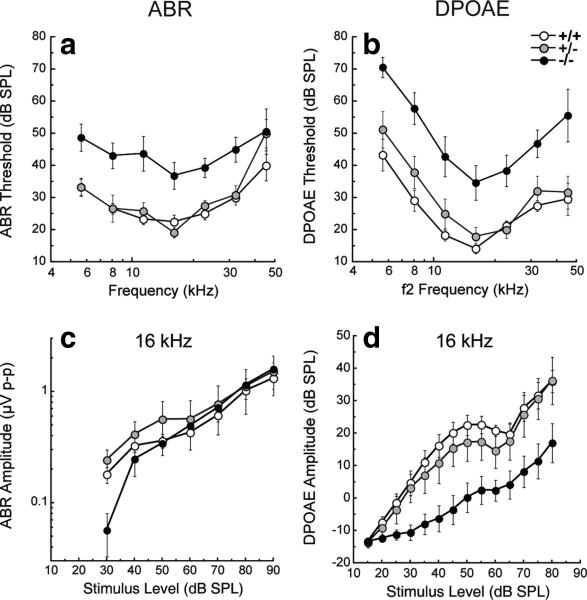Figure 4.
Baseline thresholds and suprathreshold ABRs and DPOAEs in PLZF mutants versus wild types. a, b, Thresholds for unexposed groups of animals [PLZF-deficient homozygotes (–/–) and heterozygotes (+/–), and wild types, 6 weeks of age] are shown for ABRs (a) and DPOAEs (b). c, d, Response growth with increasing stimulus level is shown, for example, at 16 kHz in c (ABR) and d (DPOAE). PLZF-deficient –/– mice demonstrate ABR and DPOAE threshold elevations of 15–30 dB and reduced suprathreshold amplitudes relative to +/+ (p < 0.01 by ANOVA), while +/– mice maintained nearly normal responses (p > 0.05 by ANOVA). Data are expressed as means ± SE, with 4–8 mice in each group. The key in b applies to all panels.

